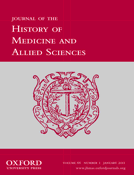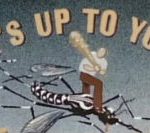September 2019
The popular image of a scientist is that of a man with unkempt hair wearing a white coat and spectacles, who is a mad, antisocial genius.
The article How does the image of the scientist appear in short animation films?, published in the latest issue of HCSM (vol.26 no.3 July/Sept. 2019) seeks to understand how science and scientists are portrayed in short films presented at 21 editions of Anima Mundi, the International Animation Festival of Brazil, from 1993 to 2013.

Images of scientists in the films: (1) To be; (2) Paralaxe; (3) 14 Bis; (4) Masks; (5) Lifeline; (6) The Aeronaut; (7) Emilie; (8) Cebolas são azuis; (9) and Stopmo.
Theoretical Physics at UFRJ, investigated animation films to reflect on the repertoire of meanings and images that have an impact on the imaginary of science and scientists.
Their study concludes, among others: scientists appear in 80% of the films – mostly white men, wearing a white coat or uniform, in secret laboratories; women scientists are notable for their underrepresentation in the films; one key focus of the narratives is the explanation of scientific processes; the analysis draws attention to the existence of films addressing emerging topics like biotechnology, genetic engineering, climate change, and space science.
Related articles in Manguinhos:
Medical documentary films under Franco’s regime – It explores the role of film and medical discourses in legitimating strategies of Franco’s fascist regime in Spain.
El cine y la difusión sanitaria – Este libro aborda los instrumentos de difusión sanitaria para impulsar la educación higiénica y de esta forma evitar el contagio de enfermedades.
Between art and information: communicating world health, 1948–70 – This paper published in the Journal of Global History examines the World Health Organization’s emergent attitudes to public information.
A vast collection on Brazilian health and science – Lee R Hiltzik, Assistant Director at the Rockefeller Archive Center provided details about the collection and explained how it can be useful to Brazilian researchers of the history of medicine and science.
La televisión mexicana y la educación para la salud – El artículo discute el uso de la televisión como un instrumento para fomentar la prevención de enfermedades a mediados del siglo XX.
See our current issue (vol.26 n. 3 Jul/Set 2019)










